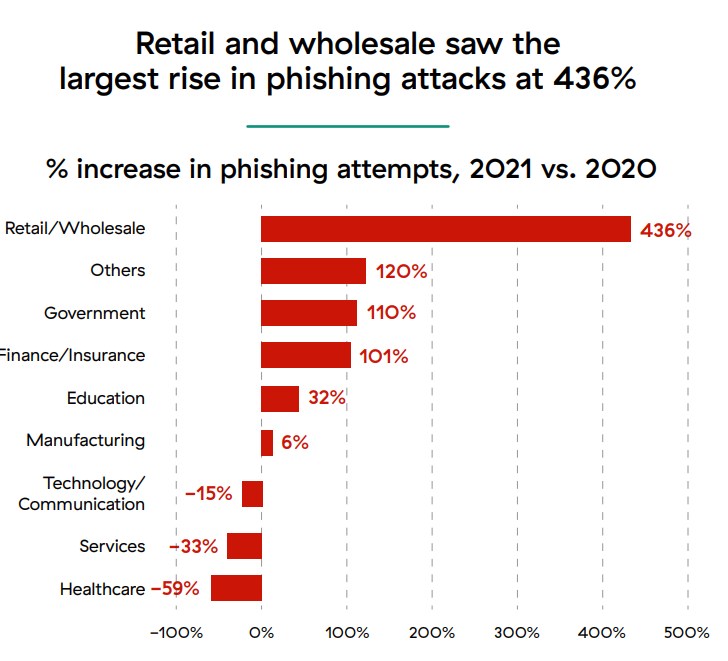Phishing has always been one of the most pervasive cyber threats, with various methods used to steal private information. One of the reasons this type of attack grows in prevalence every year is its low barrier to entry.
Cybercriminals use current events, such as the COVID-19 pandemic or cryptocurrency, to convince unwitting victims to hand over confidential data, such as passwords, credit card information, and login credentials.
According to the FBI Internet Crime Complaint Center (IC3), phishing attempts are the most frequently reported cyberattack. This is supported by Zscaler’s 2022 ThreatLabz Phishing Report which noted a 29% growth in overall phishing attacks compared to previous years, with retail and wholesale companies bearing the brunt of the increase.
The report also showed an emerging reliance on phishing-as-a-service methods, as well as new attack vectors, such as SMS phishing, becoming one of the more prevalent methods of intrusion.

Deepen Desai, CISO and VP of security research and operations at Zscaler warns that the rise in phishing-as-a-service is making it easier than ever for non-sophisticated actors to launch successful attacks. This is evidenced in the escalating use by cybercriminals of phishing as a starting point to breach organisations to deliver ransomware or steal sensitive data.
“To defend against advanced phishing attacks, organisations must leverage a multi-pronged defensive strategy anchored on a cloud-native zero trust platform that unifies full SSL inspection with AI/ML-powered detection to stop the most sophisticated phishing attempts and phishing kits, lateral movement prevention and integrated deception to limit the blast radius of a compromised user, proactive controls to block high-risk destinations such as newly registered domains that are often abused by threat actors, and in-line DLP to safeguard against data theft.”
Deepen Desai
Phishing favourites
Phishing attacks were also not evenly distributed across different industries. Retail and wholesale businesses experienced an increase of over 400% in phishing attempts - the most out of all tracked industries.

These businesses were followed by financial and government sectors, with organisations in these industries seeing over 100% increases in attacks on average. However, some industries experienced partial relief from phishing attacks last year. Healthcare saw a notable drop of 59 %, while the services industry saw a decline of 33 %.
Phishing-as-a-Service - The growing threat
While phishing has long been one of the most common tactics used in cyberattacks by sophisticated threat actors, it's becoming more accessible to non-technical cybercriminals due to a maturing underground marketplace for attack frameworks and services.
By selling their pre-built phishing tools and services on the dark web, cybercriminals are making it easier to deploy phishing scams at scale, creating a greater chance for more phishing activity in 2022.
Countering phishing attacks
According to the Zscaler’s ThreatLabz research team, an average-sized organisation receives dozens of phishing emails every day. This means that employees at all levels must be aware of the most common phishing tactics and be empowered to spot phishing attempts that can result in financial losses and damage to the business’ brand.
Recommendations
- Learning and understanding the risks posed by phishing to better inform policy and technology decisions
- Leveraging automated tools and actionable intelligence to empower employees with the tools needed to reduce phishing incidents
- Delivering timely employee training to build security awareness and promote user reporting
- Simulating phishing attacks to identify gaps in security policies and procedures
- Evaluating security infrastructure to ensure access to the latest research and system capabilities





